 "ttyymmnn" (ttyymmnn)
"ttyymmnn" (ttyymmnn)
09/09/2016 at 12:35 • Filed to: Planelopnik, planelopnik history
 9
9
 29
29
 "ttyymmnn" (ttyymmnn)
"ttyymmnn" (ttyymmnn)
09/09/2016 at 12:35 • Filed to: Planelopnik, planelopnik history |  9 9
|  29 29 |
Welcome to
This Date in Aviation History
, getting of you caught up on milestones, important historical events and people in aviation from September 7 through September 9.
!!! UNKNOWN CONTENT TYPE !!!
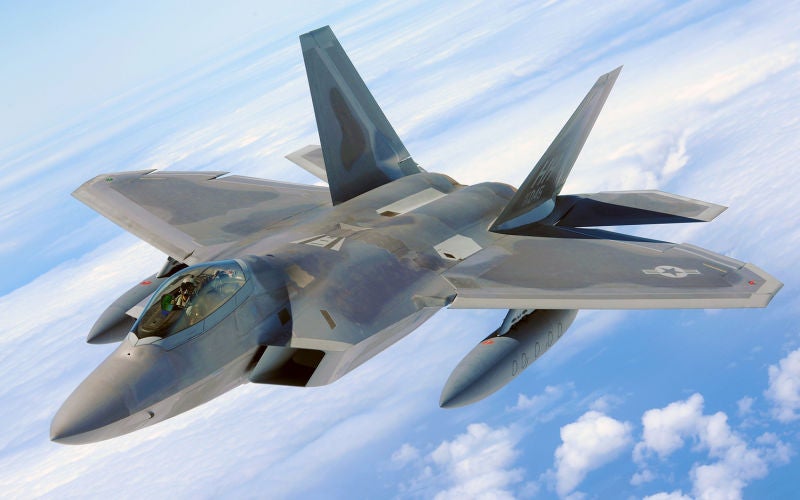
September 7, 1997 – The first flight of the Lockheed Martin F-22 Raptor. The pace of aircraft development, both military and civilian, has been nothing short of extraordinary. In only 44 years, the world went from the Wright Brothers’ first flight to breaking the speed of sound and, particularly with military aviation, the race has always been on to create new aircraft that are one step ahead of the enemy. In the 1980s, the Air Force began the process of finding a new !!!error: Indecipherable SUB-paragraph formatting!!! fighter to replace the !!!error: Indecipherable SUB-paragraph formatting!!! , and also one that would be as flexible in the fighter and ground attack role as the !!!error: Indecipherable SUB-paragraph formatting!!! . As part of that effort, and to counter ever more advanced aircraft being produced by America’s adversaries, the Air Force began development of what it called the !!!error: Indecipherable SUB-paragraph formatting!!! in 1981. The new fighter would also make use of the latest advances in !!!error: Indecipherable SUB-paragraph formatting!!! technology. By 1984, the Air Force settled on the requirements for the new aircraft, and they called for a fighter with a 50,000 poound maximum takeoff weight, a radius of 800 miles and the ability for supercruise, meaning the fighter could maintain supersonic speeds without the use of afterburners. Two aircraft were selected for a competition for what would result an very lucrative contract: the Lockheed Martin YF-22, and the !!!error: Indecipherable SUB-paragraph formatting!!! . Though the YF-23 was stealthier and faster, the YF-22's !!!error: Indecipherable SUB-paragraph formatting!!! engines made it more maneuverable. While both aircraft were seen as very capable platforms, the Air Force selected the YF-22, and it entered production in 1996.
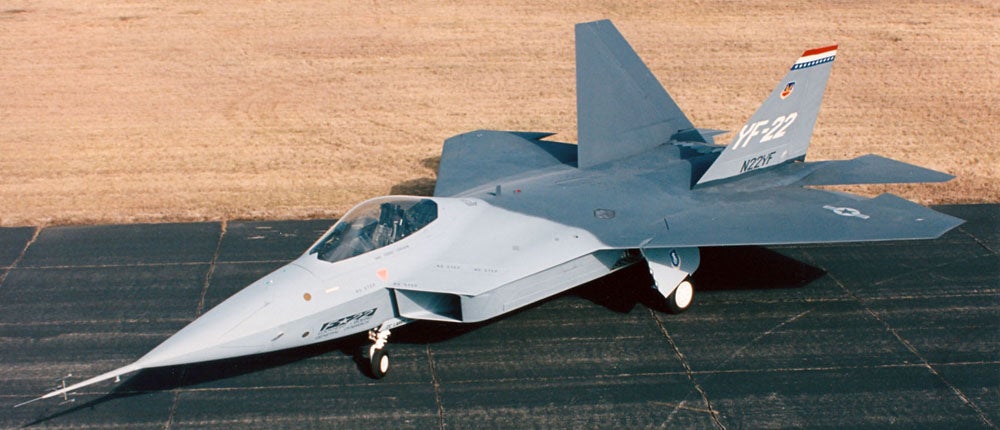
YF-22 prototype
The Air Force !!!error: Indecipherable SUB-paragraph formatting!!! the !!!error: Indecipherable SUB-paragraph formatting!!! Raptor as a “combination of stealth, supercruise, maneuverability, and integrated avionics, coupled with improved supportability, represent[ing] an exponential leap in warfighting capabilities. The Raptor performs both air-to-air and air-to-ground missions allowing full realization of operational concepts vital to the 21st century Air Force....The F-22 cannot be matched by any known or projected fighter aircraft.” The Raptor’s stealthy design allows it to target and destroy opponents before being detected by the enemy, and its advanced avionics allow it not only to protect itself, but to protect other assets as well, and it is seen as a critical component to the future networked battlefield. During the development of the aircraft, designers toyed with different names and designations for the F-22. At one time, in a nod to its capability for ground attack, it was designated F/A-22, but upon introduction the designation was changed back to F-22. Lockheed had originally chosen “Lightning II” after the iconic WWII fighter, and it was also briefly called the “SuperStar” and “Rapier.” But, perhaps in a reference to the Eagle it was meant to replace, the Air Force eventually settled on Raptor. The F-22 is powered by a pair of !!!error: Indecipherable SUB-paragraph formatting!!! afterburning turbofans, and has an estimated top speed of Mach 2.5. It is armed with one 20mm !!!error: Indecipherable SUB-paragraph formatting!!! rotary cannon, and can carry air-to-missiles for air defense, air-to-ground missiles for ground attack, and 4 underwing pylons can be fitted with either drop tanks or ordnance. Due in part to its high cost, and the continued development of what some consider to be the more advanced !!!error: Indecipherable SUB-paragraph formatting!!! , production of the Raptor was halted in 2011 after the completion of just under 200 operational aircraft. However, the protracted and troublesome development of the F-35 has led to a high demand for the Raptor to respond to a burgeoning number of missions around the world, leading to discussions about restarting the F-22 production line. However, this is unlikely, as much of the production materials were destroyed when the production line was shut down, and the !!!error: Indecipherable SUB-paragraph formatting!!! is estimated to be upwards of $40 billion. (US Air Force Photos)
!!! UNKNOWN CONTENT TYPE !!!
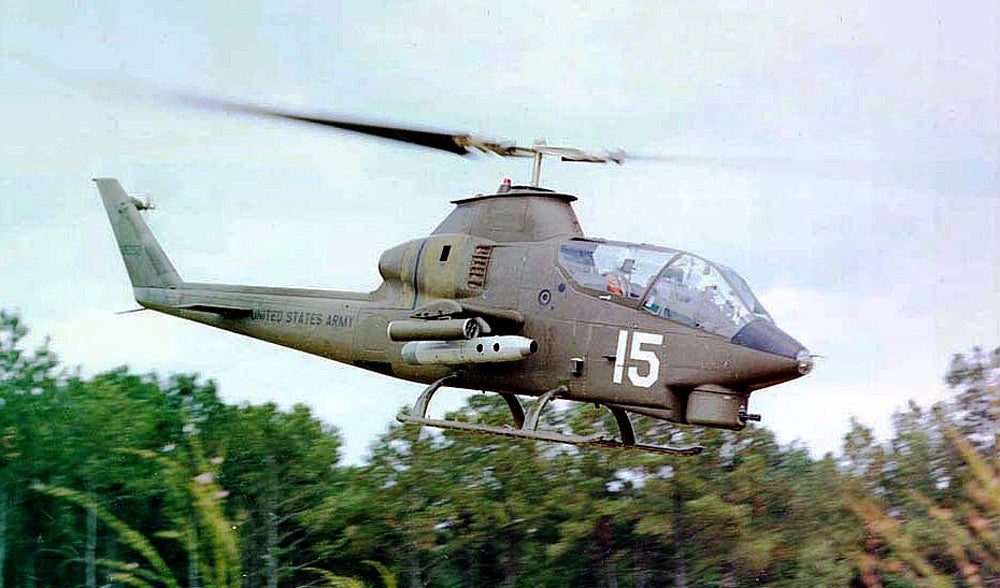
September 7, 1965 – The first flight of the Bell AH-1 Cobra. By the Vietnam War, the US Army had become become very much a helicopter-borne force, using the theories of !!!error: Indecipherable SUB-paragraph formatting!!! to attack their enemy and using the !!!error: Indecipherable SUB-paragraph formatting!!! , better known as the Huey, as their modern Army mule. This all-purpose utility helicopter, which first flew in 1956, came to symbolize the war in Vietnam, as it appeared on the nightly news airlifting troops to the battlefield and evacuating casualties back to medical aid stations. While the Huey proved to be invaluable in these roles, it was also relatively slow, lightly armed, and susceptible to ground fire. The Army responded by turning some of the Hueys into makeshift gunships, but they soon realized the need for a new, dedicated attack helicopter to protect the transport helicopters, particularly when they were under fire and vulnerable in hot landing zones and support ground troops in combat. Bell Helicopter had been working on the first helicopter gunship as early as the 1950s, and they presented the Army with the !!!error: Indecipherable SUB-paragraph formatting!!! in 1963, which was essentially the first modern attack helicopter. The Army was impressed, but the Sioux Scout had shortcomings that concerned Army brass. A year later, they launched the Advanced Aerial Fire Support System (AAFSS) competition and settled on the !!!error: Indecipherable SUB-paragraph formatting!!! which, after 10 years of costly development, had turned out to be too complex and was ultimately canceled. However, Bell, which had not been asked to take part in the competition, had been continuously developing their own light attack helicopter, using the engine, transmission and rotor system that had been proven effective in the UH-1 Iroquois. The new helicopter, designated the Bell 209, was designed to carry 7.62mm miniguns or a grenade launcher in a chin-mounted turret, as well as rockets or missiles on small wings affixed to the fuselage. A crew of two—pilot and gunner—sat in a tandem configuration that made for a very narrow profile when seen head-on, making it more difficult to hit from the ground.
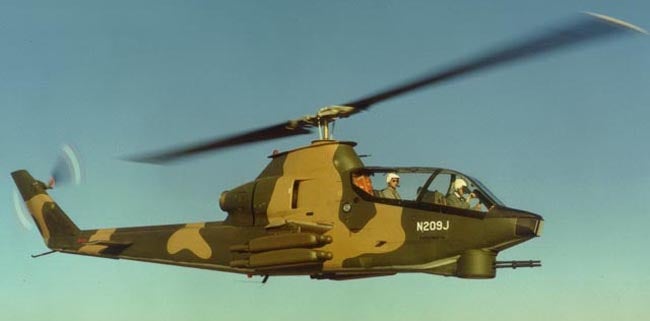
The Cobra prototype, the Bell 209
In 1967, the Army adopted the 209, now with a traditional fixed landing skid rather than the original retractable gear, as the Cobra. Cobras were in the air over Vietnam by the summer of 1967, and saw action during the !!!error: Indecipherable SUB-paragraph formatting!!! of 1968 and throughout the rest of the war. In addition to their combat support roles, Cobras teamed with !!!error: Indecipherable SUB-paragraph formatting!!! light observation helicopters to form hunter-killer teams, and also provided support during the rescue of downed pilots. It is difficult to overstate the effectiveness of the Cobra as a dedicated attack aircraft, and it has proven so useful that its basic design was modified into more powerful versions with the addition of a second engine. The resulting !!!error: Indecipherable SUB-paragraph formatting!!! and !!!error: Indecipherable SUB-paragraph formatting!!! , as well as the latest version, the !!!error: Indecipherable SUB-paragraph formatting!!! , all of which form the backbone of the US Marine Corps attack helicopter fleet, serve to this day and will continue to do so for quite some time. Older AH-1 Cobras also remain in service with export countries, and two Firewatch Cobras !!!error: Indecipherable SUB-paragraph formatting!!! the US Forest Service by using infrared sensors and cameras to support firefighters on the ground. (US Army photos)
!!! UNKNOWN CONTENT TYPE !!!
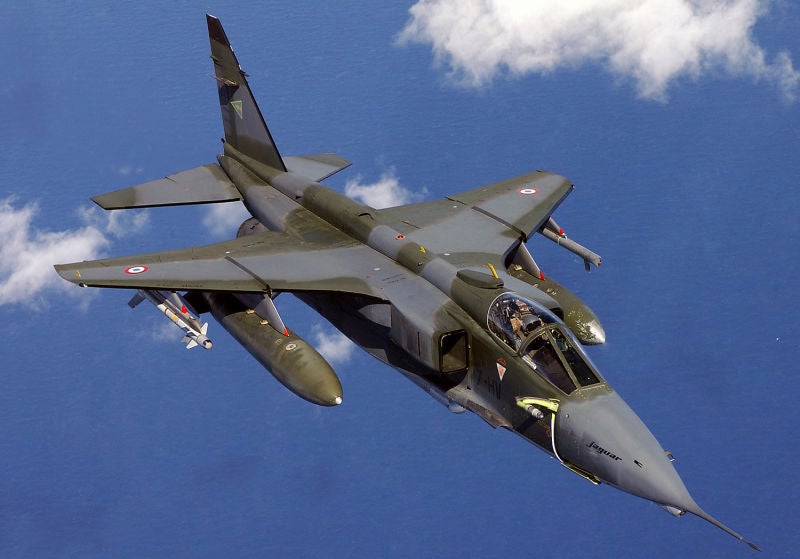
September 8, 1968 – The first flight of the SEPECAT Jaguar. Developing a new military aircraft, or any aircraft for that matter, is an extremely expensive undertaking. But one way to reduce your own costs, and take advantage of the expertise of others, is to form a consortium of manufacturers from friendly nations and divide up the work. In the early 1960s, the English Royal Air Force began looking for a new two-seat supersonic trainer to replace the !!!error: Indecipherable SUB-paragraph formatting!!! and the !!!error: Indecipherable SUB-paragraph formatting!!! , and the French Armée de l’Air was looking for a new supersonic trainer that could also double as a light attack aircraft to replace the !!!error: Indecipherable SUB-paragraph formatting!!! , the !!!error: Indecipherable SUB-paragraph formatting!!! and the !!!error: Indecipherable SUB-paragraph formatting!!! The two nations decided to work together on the project, forming a partnership between !!!error: Indecipherable SUB-paragraph formatting!!! and the !!!error: Indecipherable SUB-paragraph formatting!!! that was known as Société Européenne de Production de l’Avion d’École de Combat et d’Appui Tactique (SEPECAT) which translates as “European company for the production of a combat trainer and tactical support aircraft.” The two companies agreed that unique assemblies would be produced by both countries, and that final assembly would take place in both England and France. A second consortium of Rolls-Royce in England and Turbomeca in France worked together to produce the !!!error: Indecipherable SUB-paragraph formatting!!! afterburning turbofan engines that would give the Jaguar a top speed of Mach 1.6. The design featured a high wing that allowed for easy access to weapons stores and external fuel tanks, a tricycle landing gear, and unique overwing pylons for short-range air-to-air missiles, an arrangement that freed up space under the wings fuel tanks, weapons or other stores.
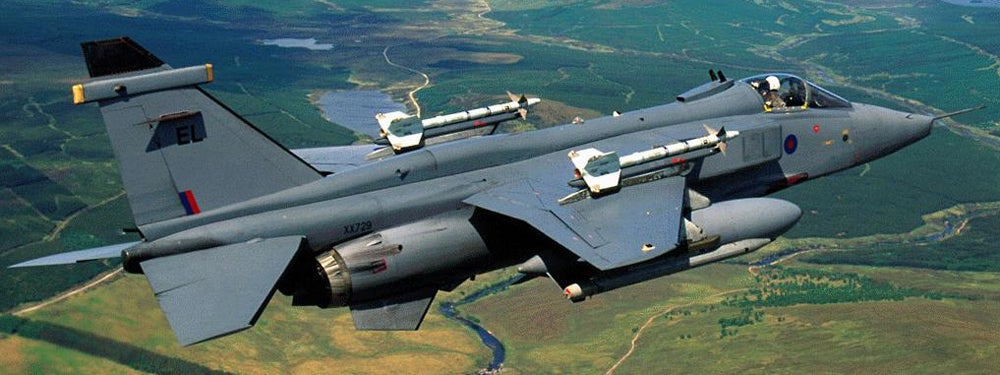
RAF Jaguar showing over-wing missile stations
The French were the first to receive the new fighter, in both the E (
École
, or trainer) and A (
Appui
, or Attack/Support) versions in 1973. While initially envisioned as a nuclear-capable attack aircraft, the Jaguar never performed this role for the
Armée de l’Air
, and instead was used as a support aircraft to clear the way for the nuclear armed Mirage fighters. The Jaguar served the French in numerous regional conflicts in their former colonies, as well as the
!!!error: Indecipherable SUB-paragraph formatting!!!
in 1991. The RAF received the Jaguar into service in 1974 in both fighter/bomber and trainer versions, where it eventually saw action in the Gulf War of 1991 alongside French Jaguars, and returned to the Gulf in 1994 as a target designation aircraft for other
!!!error: Indecipherable SUB-paragraph formatting!!!
aircraft. Unlike the French, the British used the Jaguar in the tactical nuclear strike role where it carried the
!!!error: Indecipherable SUB-paragraph formatting!!!
tactical nuclear bomb. SEPECAT procuded a total of 543 Jaguars for France and England as well as a number of export customers. All but India have since retired the aircraft.
(Top photo US Air Force; second photo author unknown)
!!! UNKNOWN CONTENT TYPE !!!
Short Takeoff
!!! UNKNOWN CONTENT TYPE !!!
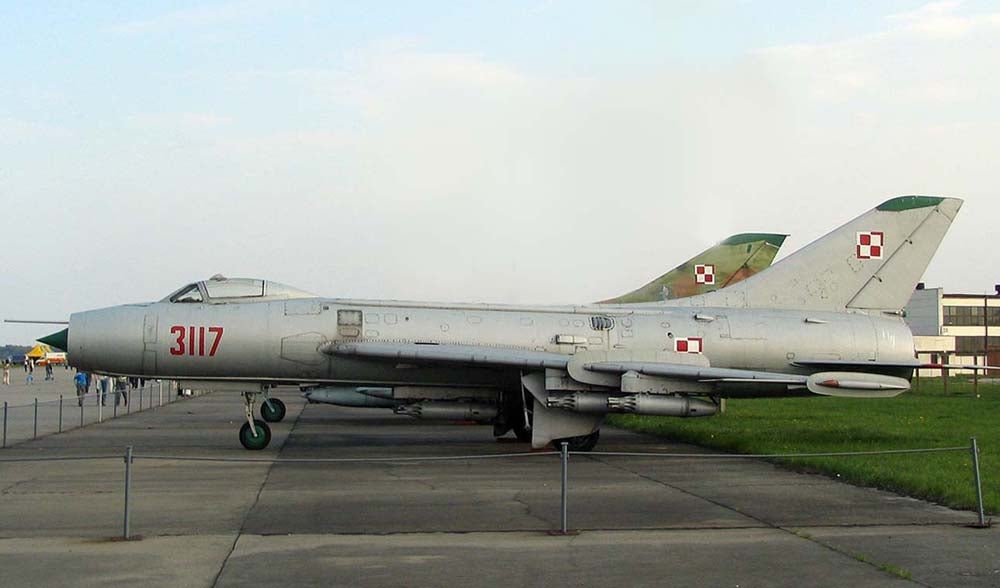
September 7, 1955 – The first flight of the Sukhoi Su-7, a swept-wing supersonic fighter developed by the Soviet Union and the first Russian fighter to employ an all-moving tailplane ( !!!error: Indecipherable SUB-paragraph formatting!!! ) and a movable cone in the air intake to adjust airflow into the engine at supersonic speeds known as a translating centerbody. Given the NATO designation Fitter , the Su-7 was designed as a high-speed low-level tactical fighter. Its wing was dramatically swept at 60-degrees and, when fitted with a !!!error: Indecipherable SUB-paragraph formatting!!! afterburning turbofan, it was capable of reaching speeds up to Mach 2. Though unsuccessful as a dogfighter, the Su-7B variant proved very successful as a tactical ground attack aircraft, becoming the primary Soviet ground attack aircraft of the 1960s. Nearly 1,900 were produced from 1957-1972, and the type was retired in 1990. (Photo author unknown via !!!error: Indecipherable SUB-paragraph formatting!!! )
!!! UNKNOWN CONTENT TYPE !!!
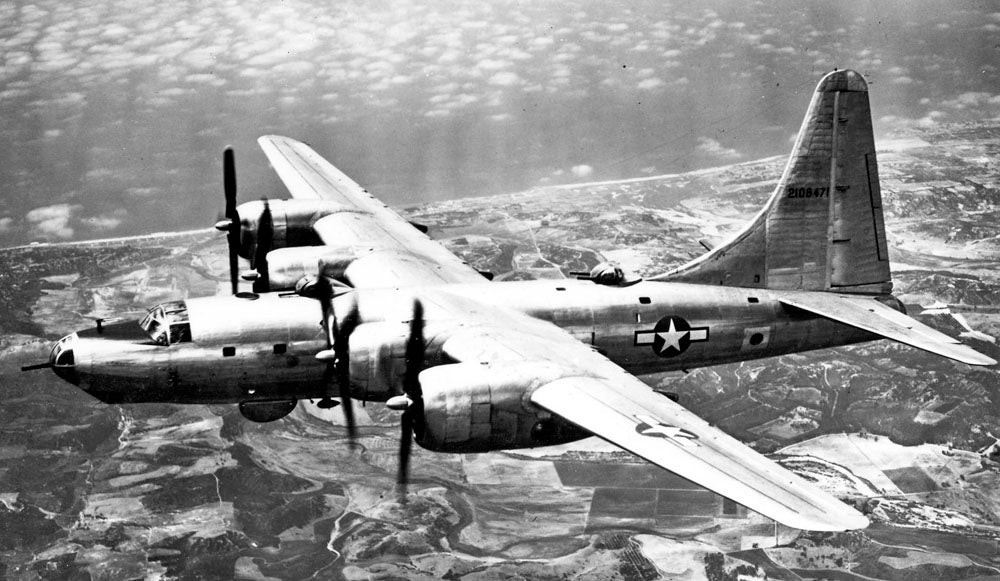
September 7, 1942 – The first flight of the Consolidated B-32 Dominator, a heavy strategic bomber developed as a fallback design should the !!!error: Indecipherable SUB-paragraph formatting!!! prove unsuccessful. Following the successful launch of the Superfortress, production of the Dominator was halted after only 118 were built, and those only saw limited action in the war after arriving in the Pacific Theater in the summer of 1945. The B-32 holds the distinction of being the last Allied aircraft shot down by the Japanese when a reconnaissance plane was attacked over Tokyo four days after Japanese Emperor Hirohito announced Japan’s surrender. The attack killed Sergeant Anthony Marchione, the last American airman to die in WWII. (US Army Photo)
!!! UNKNOWN CONTENT TYPE !!!
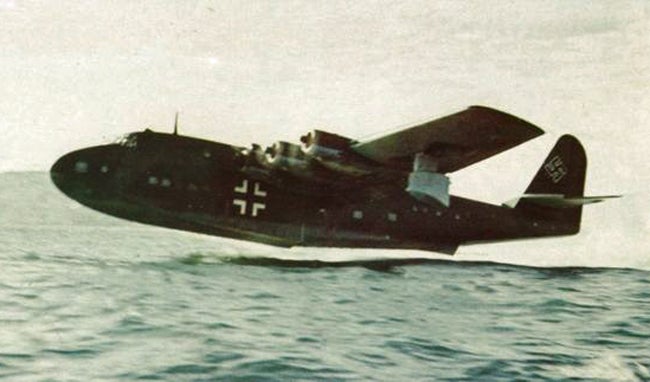
September 7, 1940 – The first flight of the Blohm & Voss BV 222, a large, six-engine flying boat developed before WWII as a commercial transport but was pressed into military service to transport troops and supplies. Known as the Wiking (Viking), the BV 222 was the largest flying boat to be put into service during the war, and it saw action in Europe and the Mediterranean. A total of 13 were built, though a number of them were destroyed by Allied fighters both in the air and on the ground, and one may have been shot down by the crew of a US Navy !!!error: Indecipherable SUB-paragraph formatting!!! . Three BV 222s came into Allied hands, but were soon scrapped or destroyed. The last BV 222 is reportedly resting underwater near Norway, and plans are underway to raise and restore it. (Photo author unknown)
!!! UNKNOWN CONTENT TYPE !!!
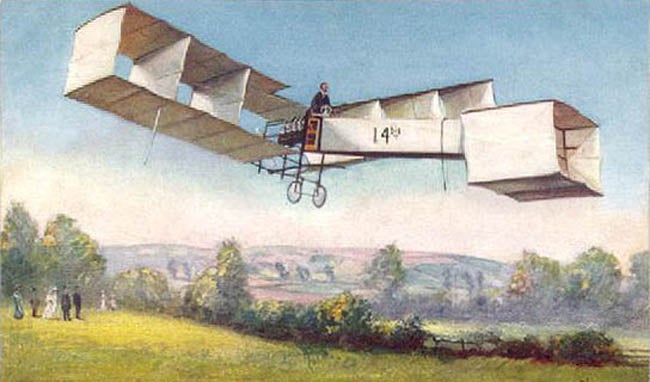
September 7, 1906 – The first flight of the Santos-Dumont 14- bis . Designed by Brazilian aviation pioneer !!!error: Indecipherable SUB-paragraph formatting!!! , the 14- bis (for testing, the aircraft was attached to Santos-Dumont’s non-rigid airship !!!error: Indecipherable SUB-paragraph formatting!!! , and bis means again or addition ) was designed around the box kite principle, and had a forward box canard for control. The dihedral design of the wings provided lateral stability, and it was powered by an !!!error: Indecipherable SUB-paragraph formatting!!! fuel-injected engine. Piloting the 14- bis , Santos-Dumont made the first powered flight anywhere outside of the US, as well as the first publicly witnessed powered flight, leading some to contend that the 14- bis is the first true airplane, since the !!!error: Indecipherable SUB-paragraph formatting!!! used a launch rail rather than wheels during takeoff. For this reason, Brazilians hail Santos-Dumont as the “Father of Aviation.” (Illustration author unknown)
!!! UNKNOWN CONTENT TYPE !!!
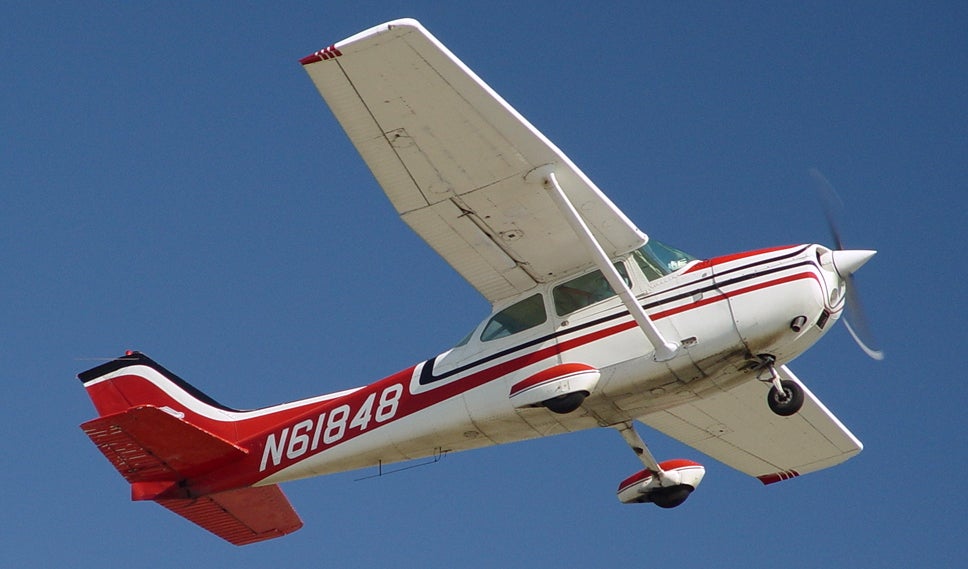
September 8, 1927 – The Cessna Aircraft Company is established. !!!error: Indecipherable SUB-paragraph formatting!!! began as a farmer in Rago, Kansas, and built his first airplane in 1911 after working for the Queen Aeroplane Company in New York. Along with Victor Roos, Cessna founded aircraft manufacturing company in 1927 (Roos left after just one month), and the company’s first aircraft, the !!!error: Indecipherable SUB-paragraph formatting!!! , was certified on October 29, 1929, the day the American !!!error: Indecipherable SUB-paragraph formatting!!! . The company closed during the !!!error: Indecipherable SUB-paragraph formatting!!! , but was reopened by Cessna’s nephews in 1934. A brand of !!!error: Indecipherable SUB-paragraph formatting!!! since 2014, Cessna is based in Wichita, Kansas and is known for the production of both piston- and jet-powered general aviation aircraft, and became famous with the introduction of the !!!error: Indecipherable SUB-paragraph formatting!!! in 1956, which has since become the most successful aircraft in history with over 43,000 produced. (Photo by P. Alejandro Diaz via !!!error: Indecipherable SUB-paragraph formatting!!! )
!!! UNKNOWN CONTENT TYPE !!!

September 9, 2006 – The first flight of the Boeing 747 Dreamlifter, a specially modified 747-400 that was developed by !!!error: Indecipherable SUB-paragraph formatting!!! to transport sections of the !!!error: Indecipherable SUB-paragraph formatting!!! for final assembly. Formerly known as the Large Cargo Freighter (LCF), the Dreamlifter was modified in Taiwan by !!!error: Indecipherable SUB-paragraph formatting!!! and has a cargo compartment that can accommodate 65,000 cubic feet of cargo, the largest in the world. The Dreamlifter can hold triple the volume of the !!!error: Indecipherable SUB-paragraph formatting!!! freighter with an 803,001 pound maximum takeoff weight (MTOW). The Dreamlifter entered service in 2007 and 4 have been built. It is flown exclusively by Boeing, with no other commercial customers. (Photo by Yamaguchi Yoshiaki via !!!error: Indecipherable SUB-paragraph formatting!!! )
!!! UNKNOWN CONTENT TYPE !!!
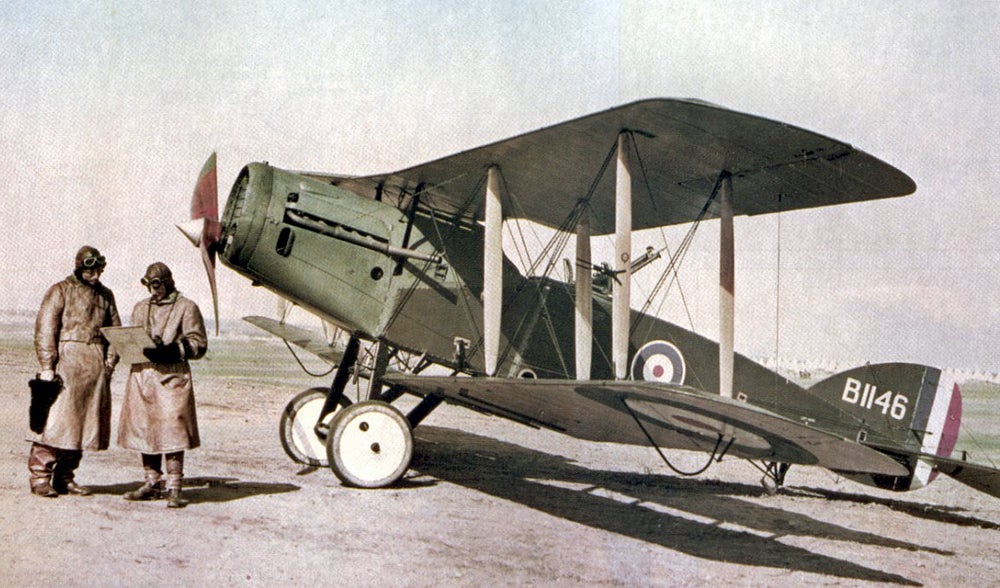
September 9, 1916 – The first flight of the Bristol F.2 Fighter, a two-seat fighter and reconnaissance aircraft developed for the Royal Flying Corps during WWI. Unlike most two-seat reconnaissance aircraft, which were not known for their dogfighting skills, the F.2 proved to be very agile, and capable of mixing with single-seat enemy fighters. The F.2 was known for making attacks with its forward-firing machine guns while the observer in the rear seat provided cover with a swiveling machine gun. Popularly known as the “Brisfit” or “Biff,” the F.2 saw its first action in April 1917 as part of the !!!error: Indecipherable SUB-paragraph formatting!!! , and fought throughout the war. Production continued until 1927, with many surplus aircraft modified for civilian use. A total of 5,329 were built. (Australian Government photo)
!!! UNKNOWN CONTENT TYPE !!!
Recent Aviation History Posts
!!! UNKNOWN CONTENT TYPE !!!
!!! UNKNOWN CONTENT TYPE !!!
!!! UNKNOWN CONTENT TYPE !!!
!!! UNKNOWN CONTENT TYPE !!!
If you enjoy these Aviation History posts, please let me know in the comments. And if you missed any of the past articles, you can find them all at
!!!error: Indecipherable SUB-paragraph formatting!!!
.
 Smallbear wants a modern Syclone, local Maple Leafs spammer
> ttyymmnn
Smallbear wants a modern Syclone, local Maple Leafs spammer
> ttyymmnn
09/09/2016 at 12:40 |
|
The missile placement on the Jaaaaaag is bizzare. I’d have thought that would mess with airflow over the wing.
But that’s what wind tunnels are for, so it must be OK...
 S65
> ttyymmnn
S65
> ttyymmnn
09/09/2016 at 12:40 |
|
Neat!
 HammerheadFistpunch
> ttyymmnn
HammerheadFistpunch
> ttyymmnn
09/09/2016 at 12:45 |
|
There may not be a cooler plane name than “Consolidated Dominator”
 ttyymmnn
> HammerheadFistpunch
ttyymmnn
> HammerheadFistpunch
09/09/2016 at 13:00 |
|
How about the Supermarine Spiteful?
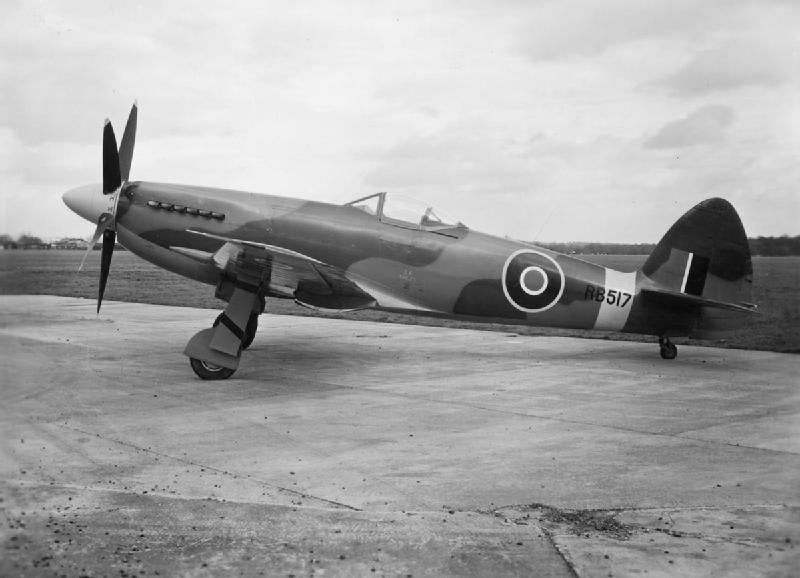
 MonkeePuzzle
> ttyymmnn
MonkeePuzzle
> ttyymmnn
09/09/2016 at 13:00 |
|
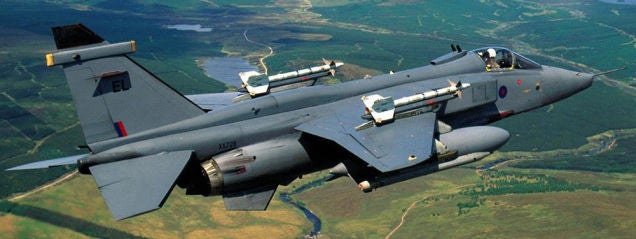
this looks somehow so much sketchier than underwing. like they could misfire right into the pilot.
 HammerheadFistpunch
> ttyymmnn
HammerheadFistpunch
> ttyymmnn
09/09/2016 at 13:01 |
|
its a close 2nd
 ttyymmnn
> Smallbear wants a modern Syclone, local Maple Leafs spammer
ttyymmnn
> Smallbear wants a modern Syclone, local Maple Leafs spammer
09/09/2016 at 13:01 |
|
It’s okay, and it’s also super cool. I was always fascinated with that as a kid.
 ttyymmnn
> MonkeePuzzle
ttyymmnn
> MonkeePuzzle
09/09/2016 at 13:02 |
|
Nah, it’s safe. It’s also wicked cool.
 Viggen
> ttyymmnn
Viggen
> ttyymmnn
09/09/2016 at 13:04 |
|
I really wish the F-22 would go back into production. Even limited. We need more, even if the Air Force is putting several billion dollars into the F-15C/D fleet for Golden Eagle upgrades.
Jaguar is an underrated and forgotten aircraft.
And there’s a lot of irony in the Su-7 immediately following short take off.
 MonkeePuzzle
> ttyymmnn
MonkeePuzzle
> ttyymmnn
09/09/2016 at 13:06 |
|
Dreamlifter was modified in Taiwan by Evergreen Aviation Technologies and has a cargo compartment that can accommodate 65,000 cubic feet of cargo, the largest in the world.
huh, so larger interior space than the Antonov An-225? but less lifting/weight ability?
 user314
> Smallbear wants a modern Syclone, local Maple Leafs spammer
user314
> Smallbear wants a modern Syclone, local Maple Leafs spammer
09/09/2016 at 13:09 |
|
The English Electric Lightning before it had a similar overwing pylon.
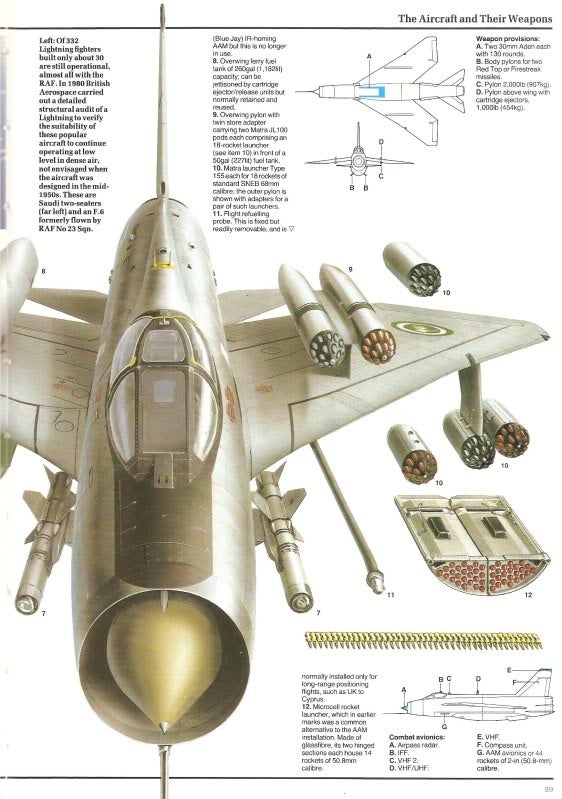
Though it was more often used for fuel tanks.
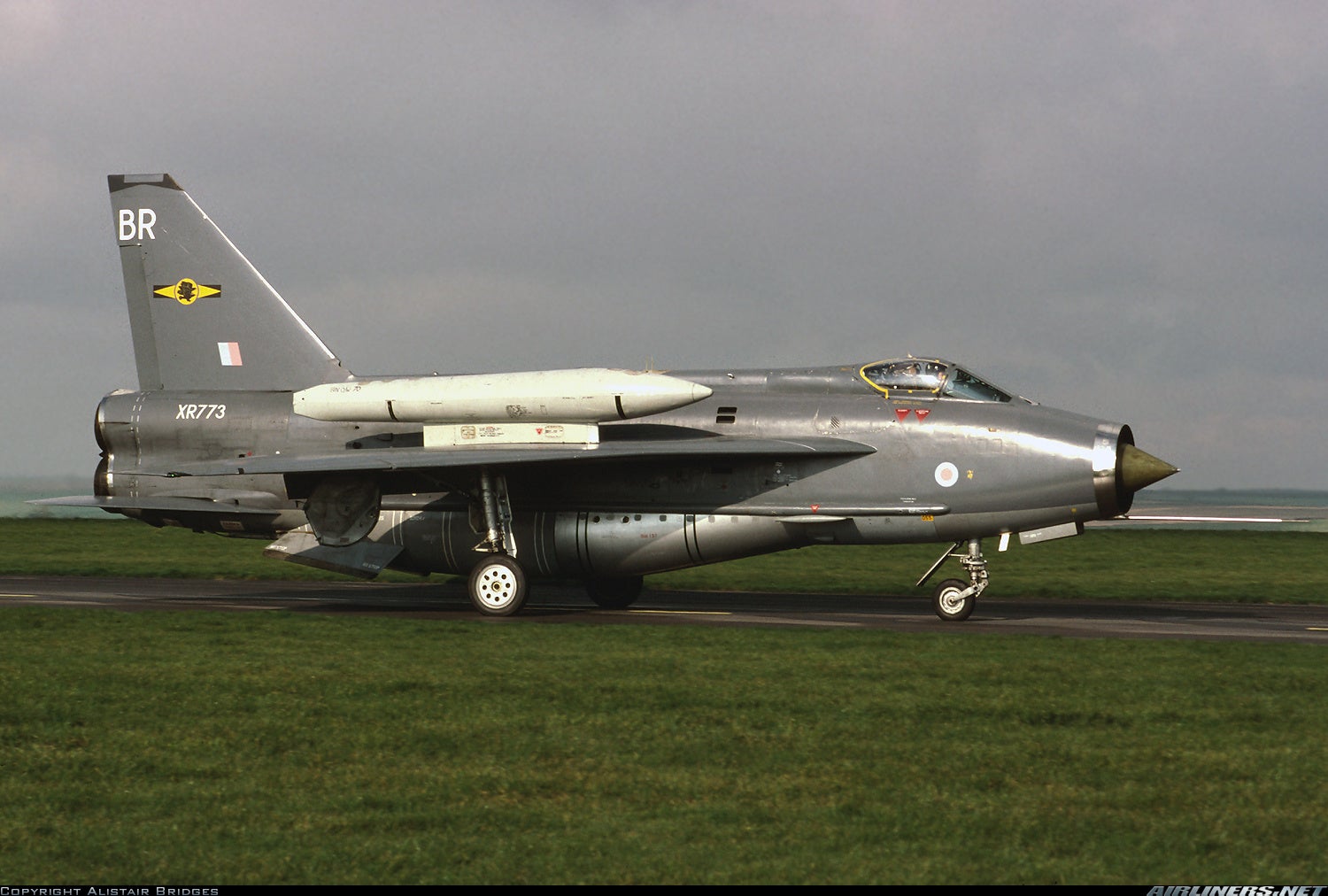
 ttyymmnn
> MonkeePuzzle
ttyymmnn
> MonkeePuzzle
09/09/2016 at 13:11 |
|
I did not do a comparison of the two. So, if you have those numbers handy, yeah, I guess so.
 user314
> ttyymmnn
user314
> ttyymmnn
09/09/2016 at 13:12 |
|
Wow, that’s a lot of firsts for one three day period, some consequential, some not so.
 Smallbear wants a modern Syclone, local Maple Leafs spammer
> user314
Smallbear wants a modern Syclone, local Maple Leafs spammer
> user314
09/09/2016 at 13:12 |
|
y tho
 ttyymmnn
> Viggen
ttyymmnn
> Viggen
09/09/2016 at 13:14 |
|
This is a very interesting read about the idea of restarting F-22 production. And it was written just two months ago.
F-22 Restart Might Not Be Beneficial for Lockheed Martin
 ttyymmnn
> user314
ttyymmnn
> user314
09/09/2016 at 13:16 |
|
It’s just a fluke of history and the calendar, but it is interesting how there are some days when there are a ton of important firsts, while other days I have to struggle to find something to write at length about. I have discovered no discernible pattern. It’s not like there are more first flights in the spring because the weather is nice. It seems to come down to development timetables or absolute necessity, such as in times of war.
 MonkeePuzzle
> ttyymmnn
MonkeePuzzle
> ttyymmnn
09/09/2016 at 13:19 |
|
I searched (briefly), I could find the interior space for teh dreamlifter, and the lifting capability of the AN-225... but not vice versa :P
 Wheelerguy
> ttyymmnn
Wheelerguy
> ttyymmnn
09/09/2016 at 13:21 |
|
I realized this: why am I going after a miniature AS fighter when a guncopter is just as effective, if not more versatile? I should be looking into attack choppers and buying A-10s more and reading about how to chop down an air force with minimal use of fighters.
Fact is, I should be fussing about naval warfare first, because I don’t think the CHI-PHI War will start on land or by air.
Oh, jeez, why am I doing this? There’s NATO. They’ll do most of the legwork on our behalf, anyway. Maybe. Sure hope they do.
 ttyymmnn
> Wheelerguy
ttyymmnn
> Wheelerguy
09/09/2016 at 13:31 |
|
The discussion of what the Army/Air Force will do about CAS going forward is very interesting. I had a long chat with an AF pilot at an air show about the F-35, the A-10 and the AH-64 a few months ago. Perhaps because he’ll never fly one, the pilot was rather disparaging, or at least not all that optimistic, about the F-35's effectiveness at CAS. And he said that the AH-64 is too vulnerable, which is why they really aren’t using them that much since the real shooting war ended. The AF is considering a stopgap aircraft, such as an armed Super Tucano, to augment the CAS jobs. It would be cheaper than keeping the A-10s in business, but it might be money best spent elsewhere. I don’t envy the people who have to make these difficult decisions, since any tactical decision also has to factor in the fiscal realities.
 ttyymmnn
> MonkeePuzzle
ttyymmnn
> MonkeePuzzle
09/09/2016 at 13:32 |
|
It’s likely that the An-225 has a higher MTOW, but the Dreamlifter has more internal space.
 Wheelerguy
> ttyymmnn
Wheelerguy
> ttyymmnn
09/09/2016 at 13:38 |
|
Either way, I hope we get some old guncopters to use round Mindanao, as well as flying buzz-tanks.
 ttyymmnn
> Wheelerguy
ttyymmnn
> Wheelerguy
09/09/2016 at 13:40 |
|
Are people in the Philippines really worried about a hot war happening in that region? What is the local feeling about it?
 facw
> ttyymmnn
facw
> ttyymmnn
09/09/2016 at 13:48 |
|
I’d guess production would never had been killed if Lockheed hadn’t also been making the F-35. They don’t care since they get their money either way.
 Wheelerguy
> ttyymmnn
Wheelerguy
> ttyymmnn
09/09/2016 at 13:55 |
|
I knew it was the Prez who provoked the Abu Sayyaf, but I still muttered: “You’re a maniac, but I want you to tell the Army to serve the freshest fucking shit to the ASG till they can’t stand it and leave”, just to get it over with and get the Bangsamoro back together again.
As for CHI-PHI... bilateral talks are best, of course, but should China shaft us on an agreement and it was blatant... Heaven forbid.
 ttyymmnn
> facw
ttyymmnn
> facw
09/09/2016 at 13:56 |
|
I’m not so sure Lockheed is the bad guy here, though I don’t exactly have love for the military-industrial complex, especially when we were warned about it by Dwight Eisenhower of all people. In retrospect, ending F-22 production was clearly shortsighted. But hindsight is always 20/20. Personally, I think the mistake was taken when they decided to proceed with the F-35. I thought we had learned our lesson about a jack-of-all-trades aircraft back in the McNamara days with the F-111. Apparently we didn’t. I’m no military analyst, but I think we’d be better off with about twice as many F-22s (or more), a revamped A-10, and maybe a new dedicated naval fighter to replace the F/A-18.
 ttyymmnn
> Wheelerguy
ttyymmnn
> Wheelerguy
09/09/2016 at 13:57 |
|
China is in no hurry to compromise on much of anything these days. Then again, nobody really is.
 Rock Bottom
> ttyymmnn
Rock Bottom
> ttyymmnn
09/09/2016 at 14:42 |
|
Little missiles over the wings? Psh.
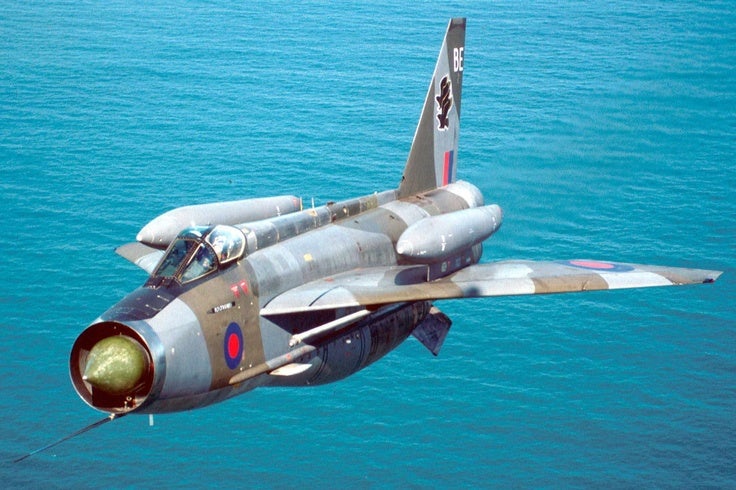
 ttyymmnn
> Rock Bottom
ttyymmnn
> Rock Bottom
09/09/2016 at 14:52 |
|
Nice. Of course, the Lighting needed extra fuel to drive around the block.
 Rock Bottom
> ttyymmnn
Rock Bottom
> ttyymmnn
09/09/2016 at 22:36 |
|
Ha ha ha! Good point!